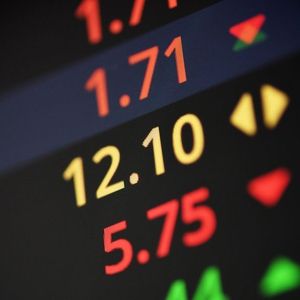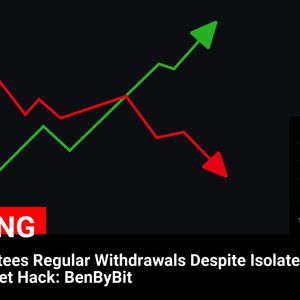In a market brimming with uncertainty, especially within the volatile cryptocurrency landscape, traditional safe-haven assets like gold are once again shining. As the digital asset world navigates its own set of challenges, including regulatory shifts and market fluctuations, the enduring appeal of gold as a store of value is amplified. This week, we’re witnessing a notable uptick in the gold price , driven by anxieties surrounding US trade policies and broader geopolitical risks. Let’s dive into the factors propelling this rally and what it means for investors. Why is the Gold Price Climbing? Uncertainty Around US Trade Policies Monday saw gold price ascend by a robust 0.56%, even amidst the subdued trading volumes typical of the US Presidents’ Day holiday. This gain, pushing XAU/USD to $2,898, comes on the heels of last Friday’s significant dip, highlighting the metal’s inherent volatility and its sensitivity to market sentiment. The primary driver behind this resurgence? A potent cocktail of geopolitical tensions and, crucially, uncertainty regarding future US trade policies . Former President Trump’s renewed focus on tariffs, particularly targeting major trading partners like Mexico, China, and Canada, is injecting a dose of unease into global markets. His proposals to impose tariffs, potentially to fund income tax cuts, are stirring concerns about trade wars and their inflationary impact. This policy ambiguity is acting as a significant tailwind for gold, traditionally sought after during times of economic policy flux. Safe-Haven Demand: Gold’s Enduring Appeal Gold’s traditional role as a safe-haven demand asset is being reaffirmed in the current economic climate. When uncertainty clouds the outlook for equities and other riskier assets, investors historically flock to gold for stability. Several factors are bolstering this safe-haven appeal: Geopolitical Risks: Ongoing global tensions continue to simmer, making gold an attractive refuge. US Trade Policy Uncertainty: As detailed above, the potential for disruptive trade policies is a major driver. Mixed US Economic Data: Recent US economic data presents a mixed bag. While CPI and PPI figures have been hotter than anticipated, retail sales have disappointed. This divergence creates confusion about the Federal Reserve’s next moves, further enhancing gold’s safe-haven status. Central Bank Buying: The World Gold Council reports that central banks continued their robust gold accumulation in 2024, marking the third consecutive year of over 1,000 tonnes purchased. This sustained demand from central banks underscores gold’s importance in global reserves and its perceived stability. FOMC Minutes and Fed Speak: What to Watch This Week Traders are keenly awaiting the release of the FOMC minutes and speeches from various Federal Reserve officials this week. These events are crucial for gauging the Fed’s stance on monetary policy amidst persistent inflation and mixed economic signals. Recent comments from Fed officials like Patrick Harker and Michelle Bowman suggest a cautious approach. Harker emphasized the need for “steady” policy, while Bowman acknowledged upside risks to inflation, even while expecting it to decline. Here’s what the upcoming US economic docket includes: Fed Speakers: Further insights into the Fed’s thinking. Housing Data: Providing clues about the strength of the housing market. FOMC Meeting Minutes: Offering detailed insights into the Fed’s discussions and policy outlook. Initial Jobless Claims: A weekly indicator of labor market health. S&P Global Flash PMIs: Early readings on February’s economic activity. These data points and Fed communications will be pivotal in shaping market expectations for interest rate cuts and, consequently, influencing gold price movements. Inflation Concerns and Gold as an Inflation Hedge While some Fed officials express confidence in inflation eventually receding to the 2% target, persistent inflation remains a concern. Gold is often viewed as an inflation hedge, although its effectiveness in this role is debated. Nonetheless, in an environment where inflation remains above target and the future path of interest rates is uncertain, gold’s appeal as a store of value is enhanced. The fact that money markets are still pricing in a degree of Fed easing in 2025 suggests that inflation concerns, even if moderating, are not fully dispelled. Technical Outlook: Can Gold Break $2,900? From a technical perspective, the gold price uptrend remains intact. For further bullish momentum, buyers need to decisively overcome the $2,900 level. Clearing this hurdle could pave the way for a test of the year-to-date high of $2,942 and potentially higher targets at $2,950 and the psychologically significant $3,000 mark. However, failure to sustain gains above $2,900 could signal weakness. A daily close below this level might open the door for a retreat towards: $2,877: February 14 swing low $2,864: February 12 low $2,790: October 31 swing high (on further weakness) Traders should closely monitor price action around the $2,900 level for clues about gold’s next directional move. Tariffs and Their Impact: FAQs Given the significant role of US trade policies in the current gold market narrative, it’s crucial to understand tariffs and their potential consequences. Let’s address some frequently asked questions: Question Answer What are tariffs? Tariffs are customs duties imposed on imported goods. They are designed to protect domestic industries by making imported goods more expensive, thus giving local producers a competitive edge. Taxes vs. Tariffs: What’s the difference? While both generate government revenue, tariffs are levied on imports at the port of entry, whereas taxes are broader and paid by individuals and businesses at the point of purchase or income. Are tariffs good or bad? Economists are divided. Some argue tariffs protect domestic jobs and correct trade imbalances. Others contend they raise consumer prices, harm overall economic growth, and can trigger retaliatory trade wars. What is Trump’s tariff plan? Trump advocates for using tariffs aggressively to support US industries and reduce the trade deficit, particularly targeting countries like Mexico, China, and Canada. He intends to use tariff revenue to fund income tax cuts. Conclusion: Gold’s Golden Moment? Gold’s recent price surge is a clear indicator of heightened market uncertainty, particularly surrounding US trade policies and their potential global economic repercussions. As investors navigate a landscape of mixed economic data, persistent inflation, and evolving Fed policy, gold’s safe-haven appeal is likely to remain strong. Keep a close watch on upcoming economic releases and Fed communications, as they will be crucial in determining the sustainability of this gold rally. For cryptocurrency investors, the traditional financial market’s reaction to uncertainty, as seen in gold’s performance, offers valuable insights into risk management and portfolio diversification strategies during times of market turbulence. To learn more about the latest Forex market trends, explore our articles on key developments shaping Gold and US Dollar liquidity.



















